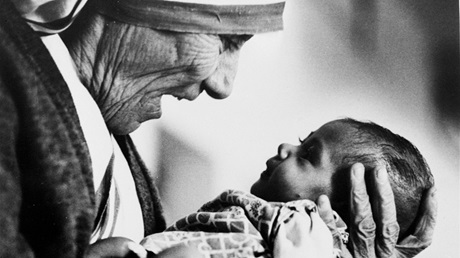Every outreach-oriented believer should know the secret of the 'Saint of Calcutta.'

My siblings and I spent much of our lives sharing our home with the young children whom our mother, Colleen Samuel, had scooped up from various parts of Bangalore City, often in the middle of the night. There was young Asha (a pseudonym)—who was rescued from being the “payment” to a greedy landlord because her mother couldn’t afford the rent—and Sara, sold by her husband to a brothel in Bombay, who arrived at our doorstep dying of AIDS. Not content with serving the poor from a distance, my mother’s work brought our family from a wealthy, middle-class neighborhood of Frazer Town, where my father was an Anglican priest, to the very seedy and often-violent neighborhood of Lingarajapuram. My parents believed that conveying the gospel to the poor meant living among them as Christ would, and serving the poor meant embracing them as part of our community and even part of our family.
My parents’ unwavering commitment to the poor in Bangalore was deeply shaped by the life and work of Mother Teresa. Every day on my way home from school, I walked past Shishu Bhavan—Mother Teresa’s home for abandoned children—and every day, I saw a steady stream of weary mothers pounding on the gates as they held listless babies draped over their shoulders. At once, young missionaries of charity would open the gates, and I would glimpse the scores of children playing and laughing in the courtyard. Through those open gates, and also in my own home, I saw mercy in action.
Mother Teresa has been catapulted back into global consciousness because of her canonization this Sunday, September 4. As part of the culminating celebration of the Jubilee of Mercy—a year-long period of prayer—Pope …


